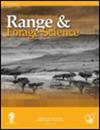Kraals或bomas增加了几个生物群系的土壤碳和肥力
IF 1.9
4区 环境科学与生态学
Q3 ECOLOGY
引用次数: 1
摘要
关于畜牧业和农业如何有助于实现理想的全球目标(如土壤肥力)的知识正面临丧失的危险。我们通过荟萃分析(随机效应模型,n = 12项研究)测试了短期开垦是否会增加不同生物群落和国家的土壤肥力。与未开垦地区相比,开垦地区的土壤碳(C)、氮(N)、磷(P)、钾(K)浓度大约增加了一倍,pH值略有增加(P≤0.0158,所有荟萃分析)。结果支持了kraal遗弃后持续营养热点是一种普遍现象的观点。一项名为“放牧健康模式”的案例研究中的轶事支持了这一发现。然而,不一致性评分(i2≥90%)表明,虽然平均效应量为正,但在某些情况下,真实结果实际上可能是负的。在我们的分析中,Kraal年龄不能预测土壤肥力,可能是由于时间间隔较粗。然而,一些研究发现钾年龄是重要的,相对固定的元素,如磷随着时间的推移而持续存在,而氮和钾则减少。利用kraals来实现“理想状态”,如野生动物与牲畜共存、土地恢复和作物施肥,将需要在生态范围内监测和维持肥力,理想情况下,科学家和牧民都可以作为全球伙伴关系的一部分投入。本文章由计算机程序翻译,如有差异,请以英文原文为准。
Kraals or bomas increase soil carbon and fertility across several biomes
Knowledge about how pastoralism and kraaling may contribute to desired global objectives, such as soil fertility, is in danger of being lost. We tested whether short duration kraaling increases soil fertility across various biomes and countries via a meta-analysis (random effects model, n = 12 studies). Kraaling approximately doubled soil concentrations of carbon (C), nitrogen (N), phosphorus (P), potassium (K), and slightly increased pH compared to non-kraaled areas ( p ≤ 0.0158, all meta-analyses). Results support the idea of persistent nutrient hotspots post kraal abandonment as a generalizable phenomenon. Anecdotes from a case study, the Herding 4 Health Model, supported findings. However, inconsistency scores ( I 2 ≥ 90%) indicated that while the average effect size was positive, in some cases the true outcome may in fact be negative. Kraal age did not predict soil fertility in our analysis, possibly due to coarse time intervals. Some studies nevertheless found kraal age to be important, with relatively immobile elements such as P persisting over time while N and K decreased. Using kraals to achieve ‘desirable states’ such as wildlife-livestock coexistence, land restoration, and crop fertilisation will require monitoring, and maintenance of fertility within ecological bounds, ideally with inputs from scientists and pastoralists alike as part of global partnerships.
求助全文
通过发布文献求助,成功后即可免费获取论文全文。
去求助
来源期刊

African Journal of Range & Forage Science
ECOLOGY-ENVIRONMENTAL SCIENCES
CiteScore
4.00
自引率
14.30%
发文量
35
审稿时长
>12 weeks
期刊介绍:
The African Journal of Range & Forage Science is the leading rangeland and pastoral journal in Africa. The Journal is dedicated to publishing quality original material that advances rangeland ecology and pasture management. The journal aims to publish research of international importance from any region, but as an African journal, we are particularly interested in research from Africa and relevant to the continent. The Journal promotes both science and its application and authors are encouraged to explicitly identify the practical implications of their work. Peer-reviewed research papers and research notes deal primarily with all aspects of rangeland and pasture ecology and management, including the ecophysiology and biogeochemistry of rangelands and pastures, terrestrial plant–herbivore interactions (both domestic and wild), rangeland assessment and monitoring, effects of climate change on rangelands, rangeland and pasture management, rangeland rehabilitation, ecosystem services in support of production, conservation and biodiversity goals, and the identification and development of intensive and semi-intensive pasture and forage resources to meet livestock production needs. Articles highlighting transdisciplinary linkages among biophysical and social sciences that support management, policy and societal values are particularly encouraged. The Journal includes relevant book reviews and invited perspectives that contribute to the development of range and forage science. Letters to the editor that debate issues raised in the Journal are acceptable. The African Journal of Range & Forage Science is the official journal of the Grassland Society of Southern Africa.
 求助内容:
求助内容: 应助结果提醒方式:
应助结果提醒方式:


